👥 The People of Kyoto, Japan
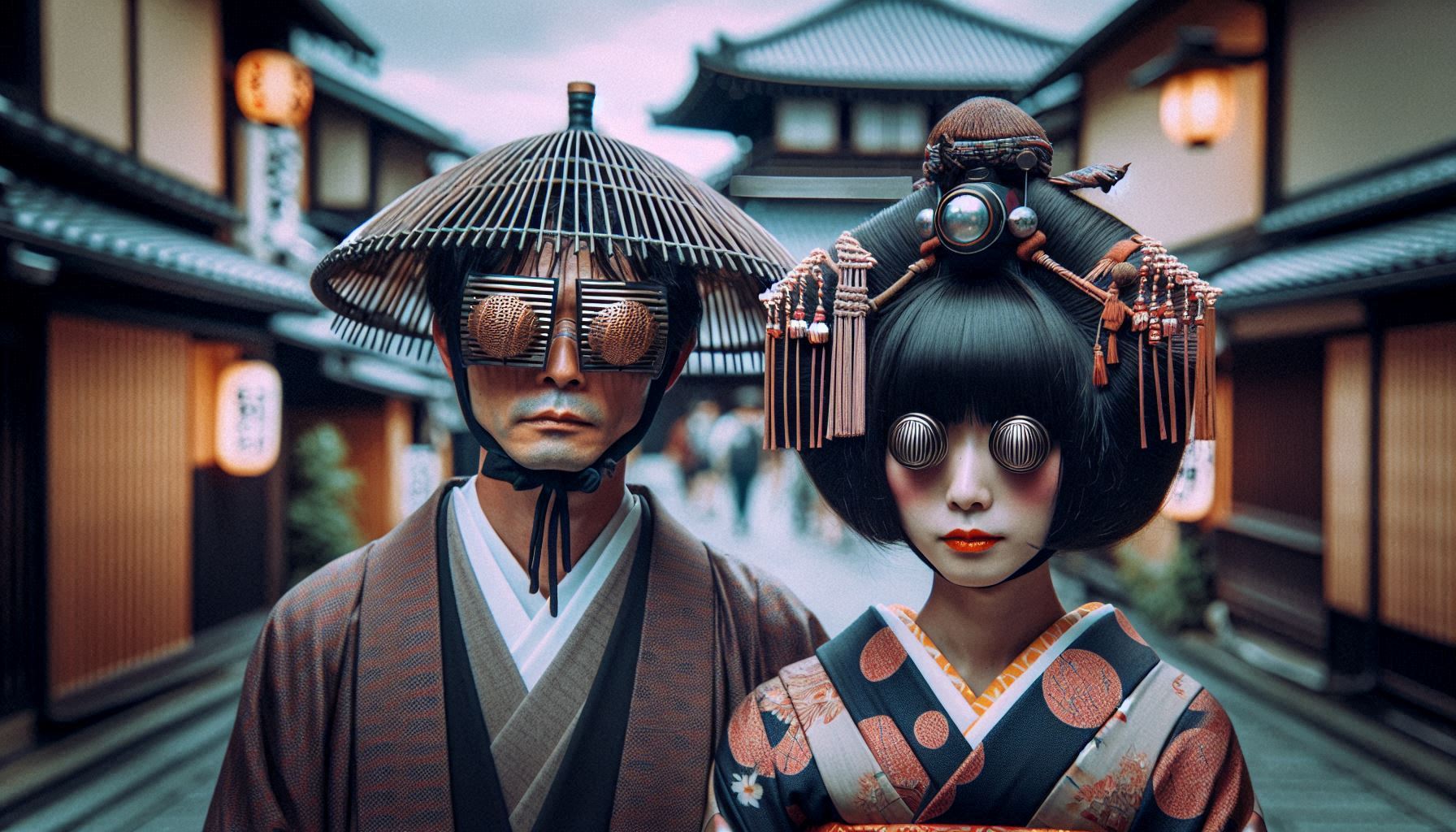
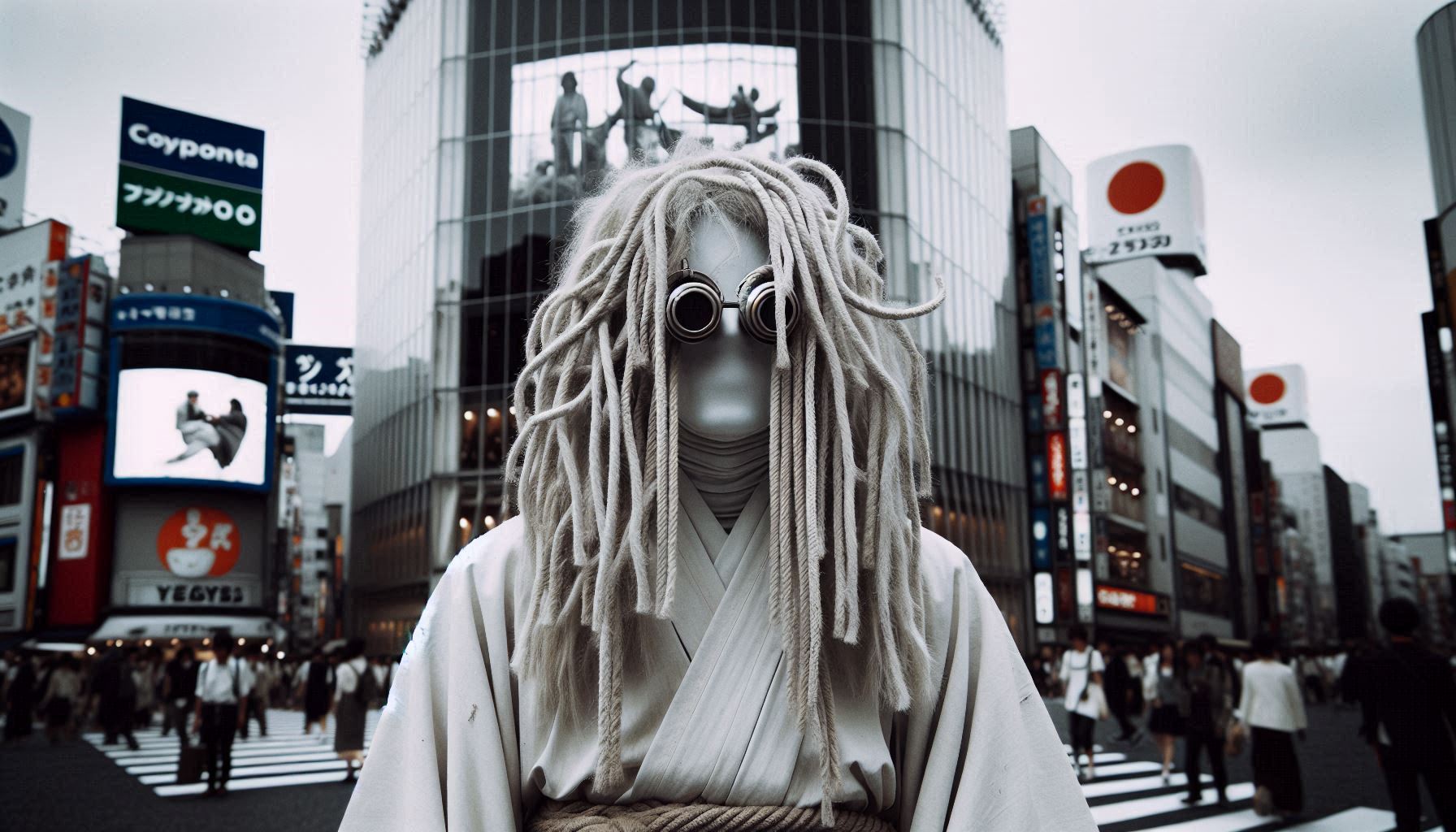
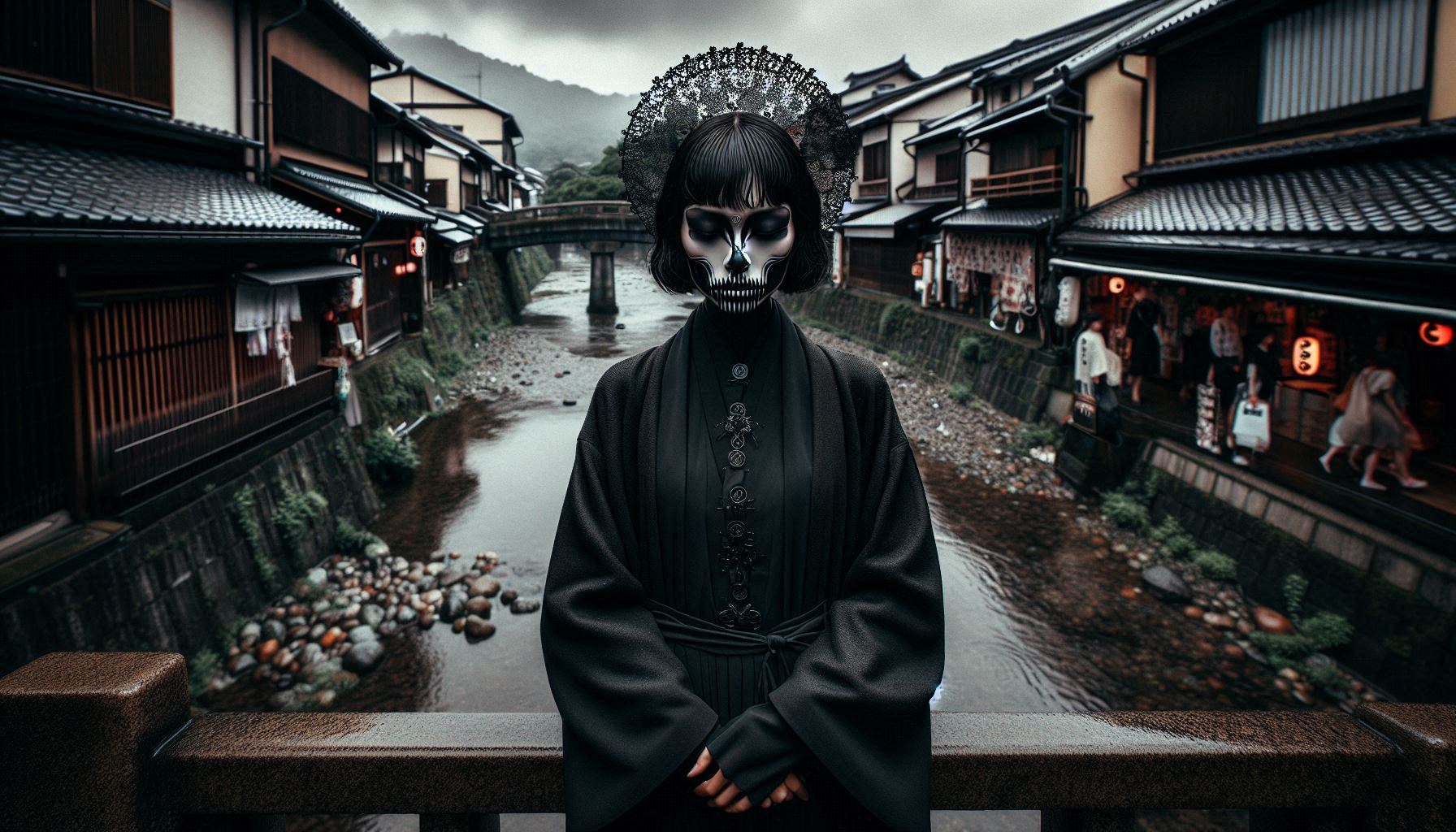
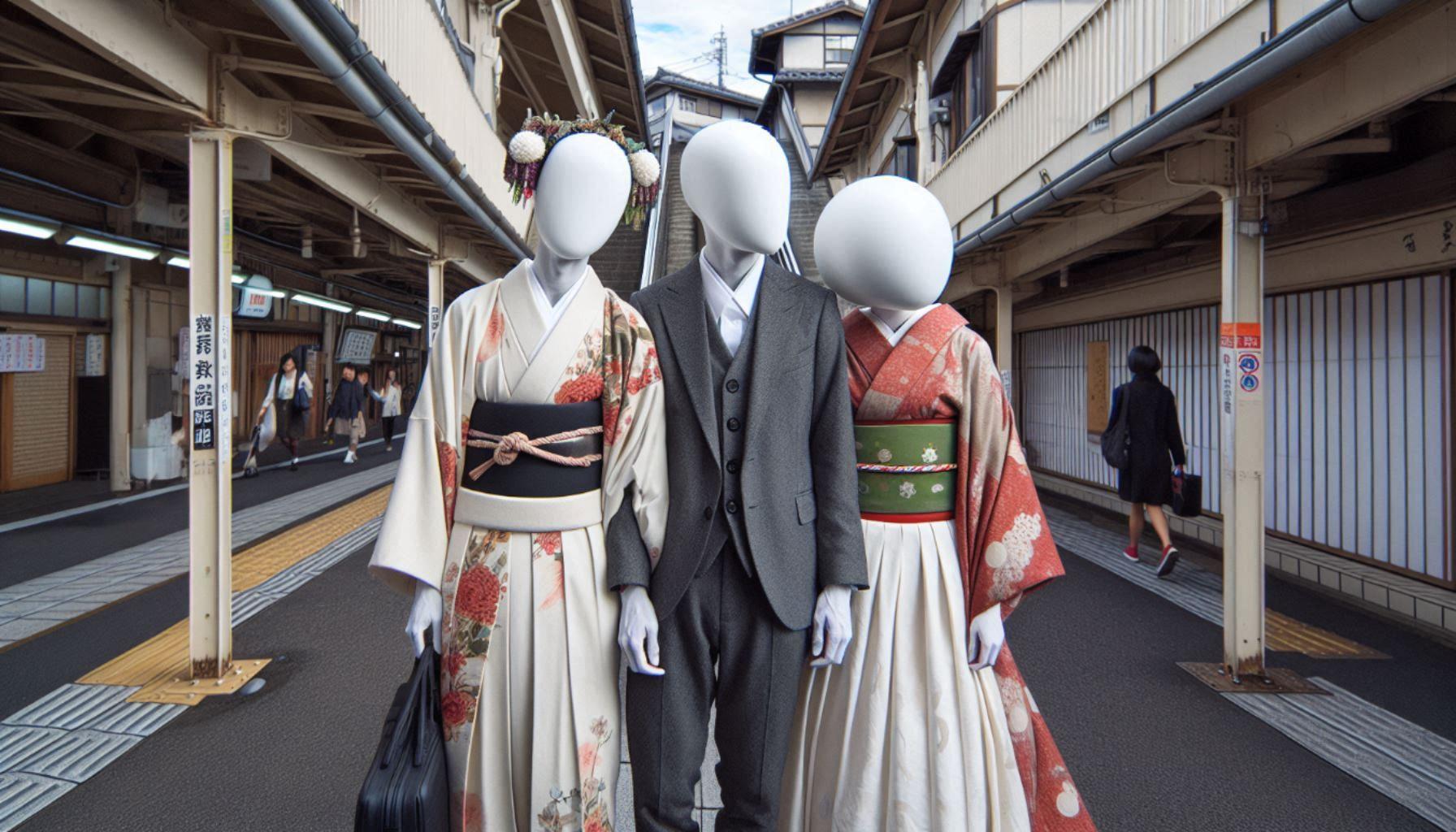
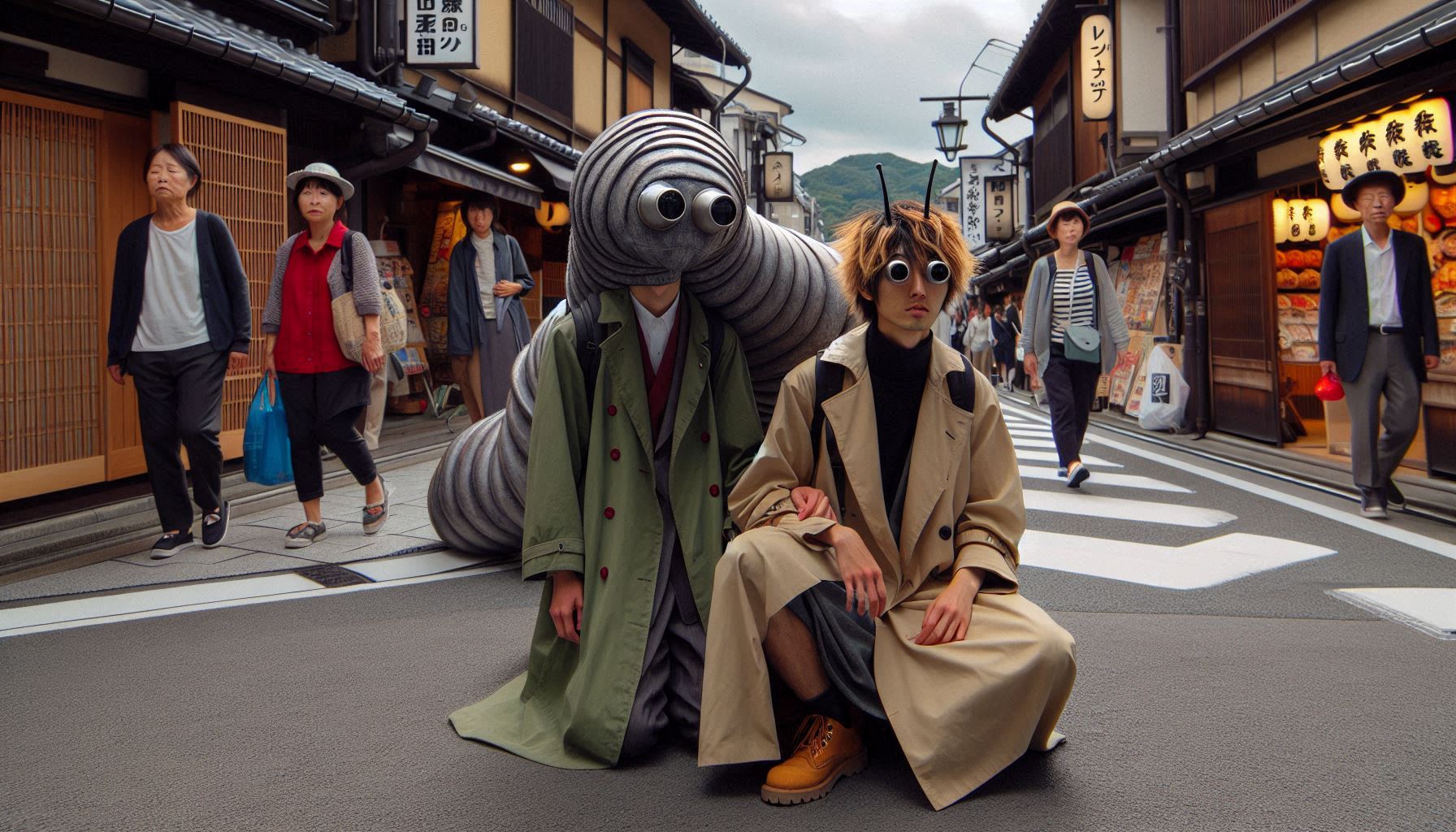
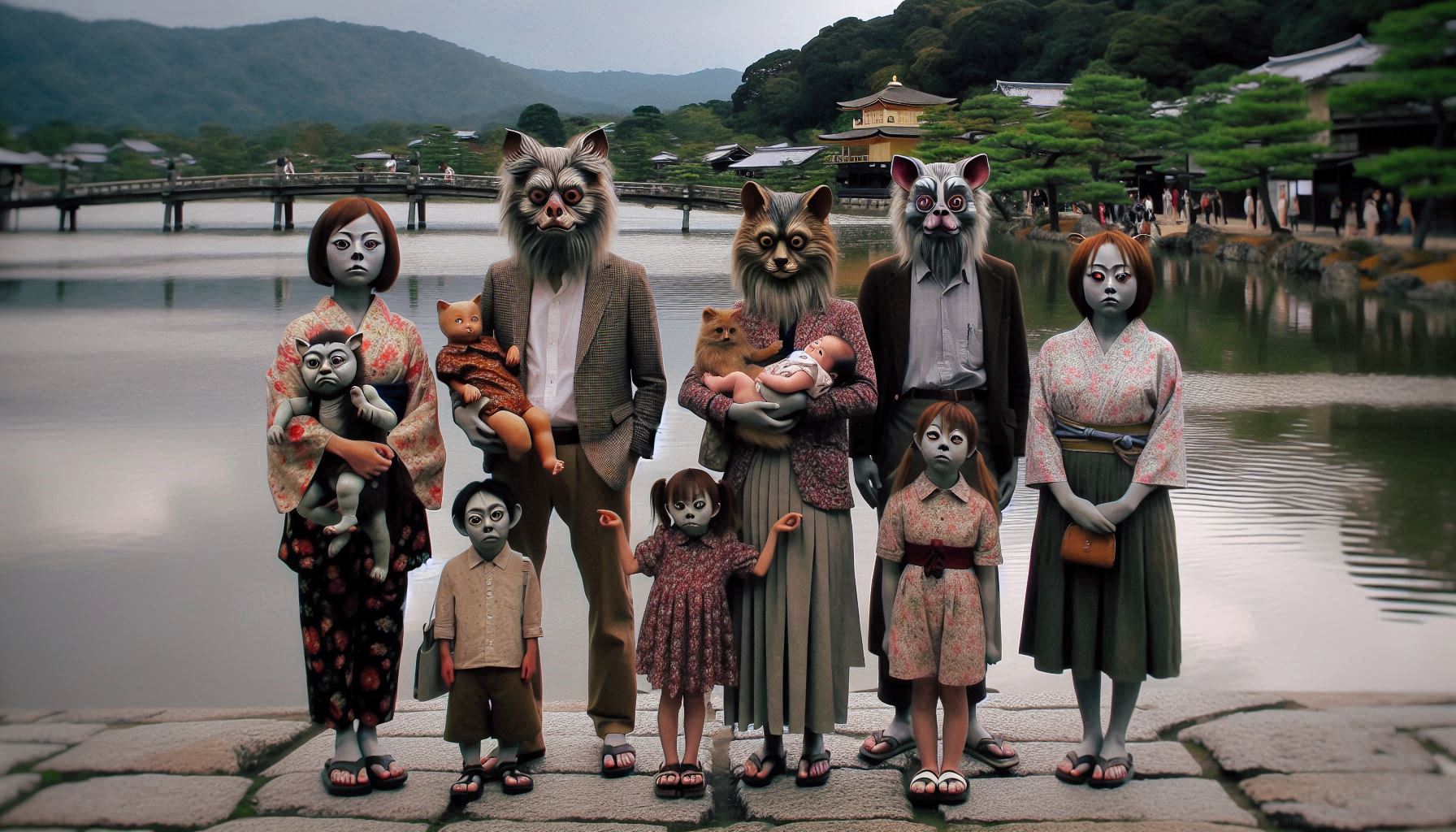
🏮 The Roof That Remembered Rain
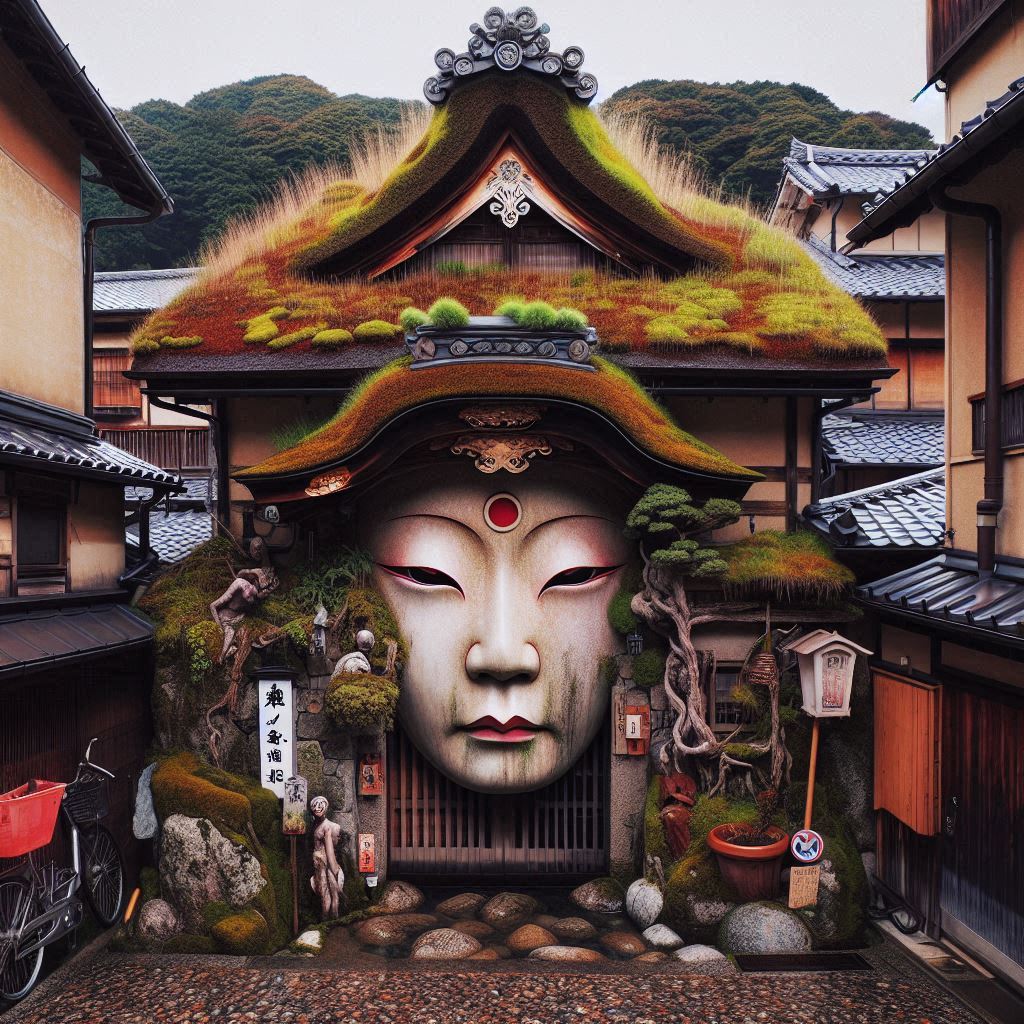
**Kyoto, Japan — Artifact #KYT-003**
They say the inn was built by a monk who never spoke, only listened. He listened to the wind, to the moss, to the footsteps of travelers who had not yet arrived. When he died — or vanished, depending on the version — the inn remained, its roof thick with memory.
The greenery that grows there is not planted. It emerges. Ferns curl in patterns that match the dreams of those who sleep beneath them. Ivy shifts color with the emotional weight of the guests. One year, the roof bloomed entirely red for a single night. No one speaks of what happened inside.
The inn accepts no reservations. It appears only to those who need it — not those who want it. A diplomat once wandered Kyoto’s alleys for three nights before finding it nestled between two buildings that hadn’t existed the day before. He checked out with a different name.
Inside, time folds gently. Guests report hearing conversations from rooms that no longer exist. One woman claimed she met her future self in the bathhouse and was given a warning she refuses to repeat.
The Registry classifies the inn as a **Type-2 Passive Locus**: non-hostile, semi-sentient, and temporally porous. Attempts to map its floorplan have failed. Attempts to purchase it have been met with polite laughter and the sudden disappearance of the buyer’s legal identity.
Postage Stamp
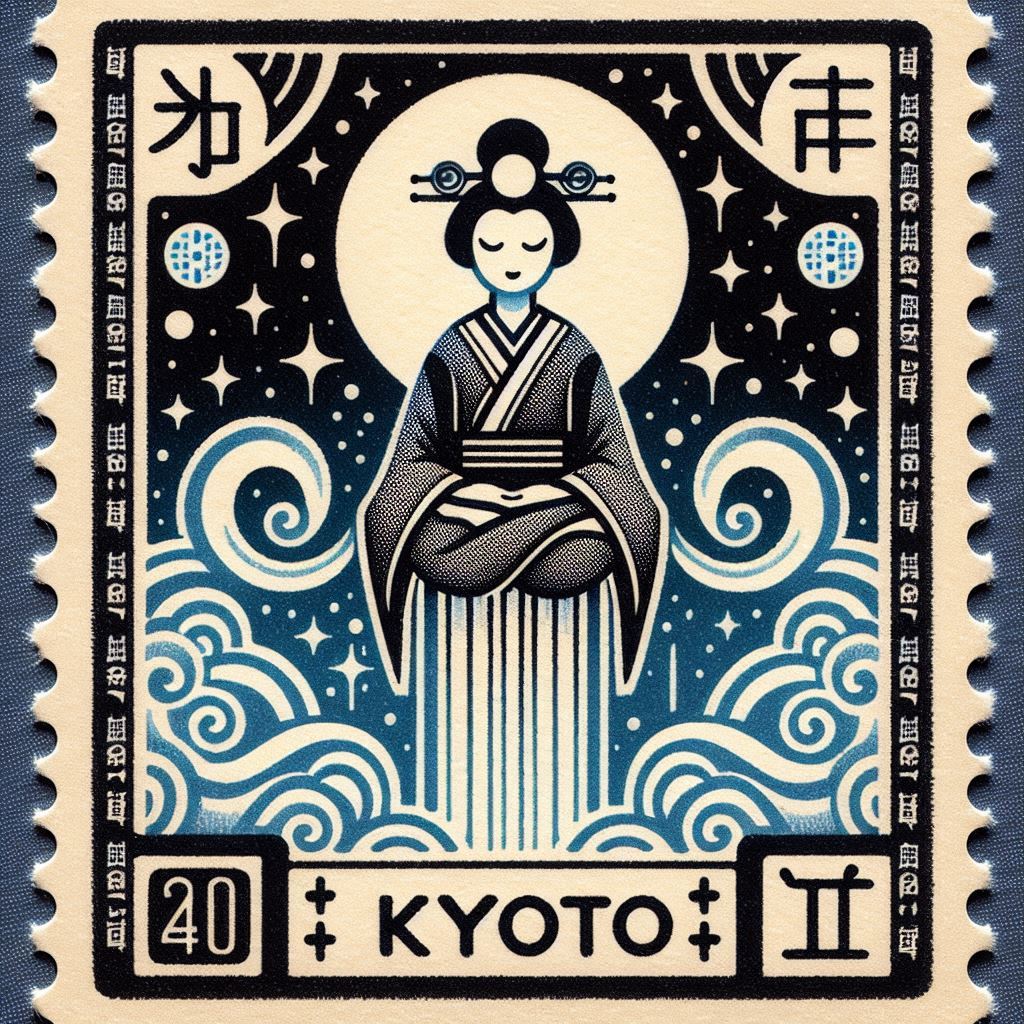
Local Landmark
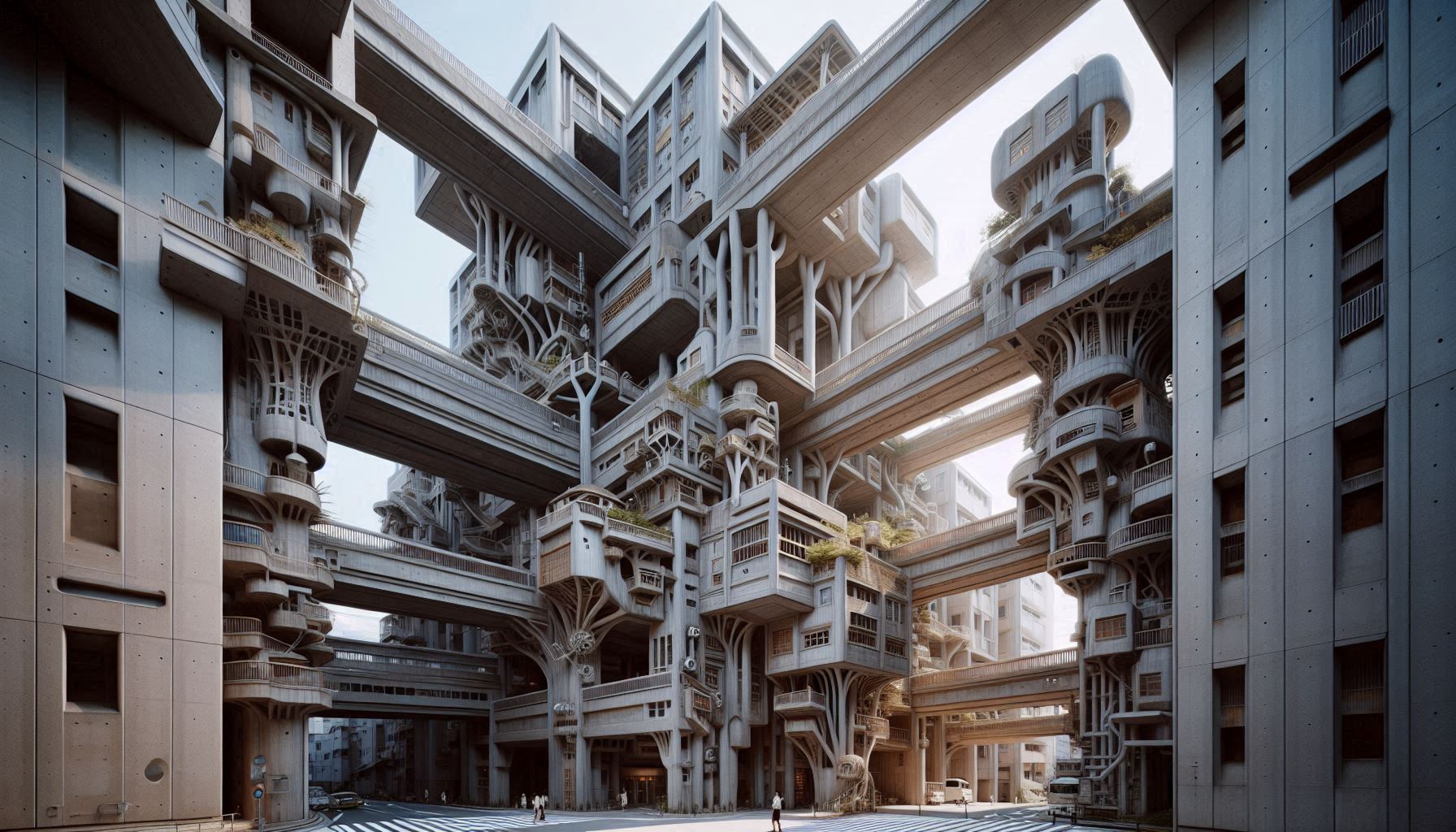
Designated as **Structure KYT-Δ7**, this multi-tiered complex was originally constructed to house Kyoto’s Displacement Harmonization Bureau. Its walkways are said to shift subtly overnight, aligning with unseen migratory patterns. Residents report dreams of staircases that never end and balconies that overlook memories not their own. Officially decommissioned in 2091, the building remains fully lit and partially occupied. Entry is unrestricted. Exit, however, is not always guaranteed.
🎵 Regional Anthem
🧠 Trivia
- - 🧳 Kyoto’s transit system includes a line that appears only to those who’ve forgotten where they were going.** It has no published schedule and no confirmed endpoints.
- 🪞 A mirror in the Gion district reflects a version of Kyoto where the Meiji Restoration never occurred.** Locals refer to it as “the still city.”
- 🧵 Ceremonial garments worn by certain street performers are woven with memory-reactive thread.** Patterns shift subtly in response to nearby unresolved emotions.
- 🕯️ Once a year, all lanterns in the Higashiyama district flicker in unison for exactly 88 seconds.** No power source has been identified.
💬 Local Proverb
“When the roof hums, do not answer the door — you already know who's there.” - This proverb reflects Kyoto’s mnemonic architecture, suggesting that certain structures evoke memories so vividly they manifest as visitors — not from outside, but from within.
🧌 Local Creatures of Questionable Origin
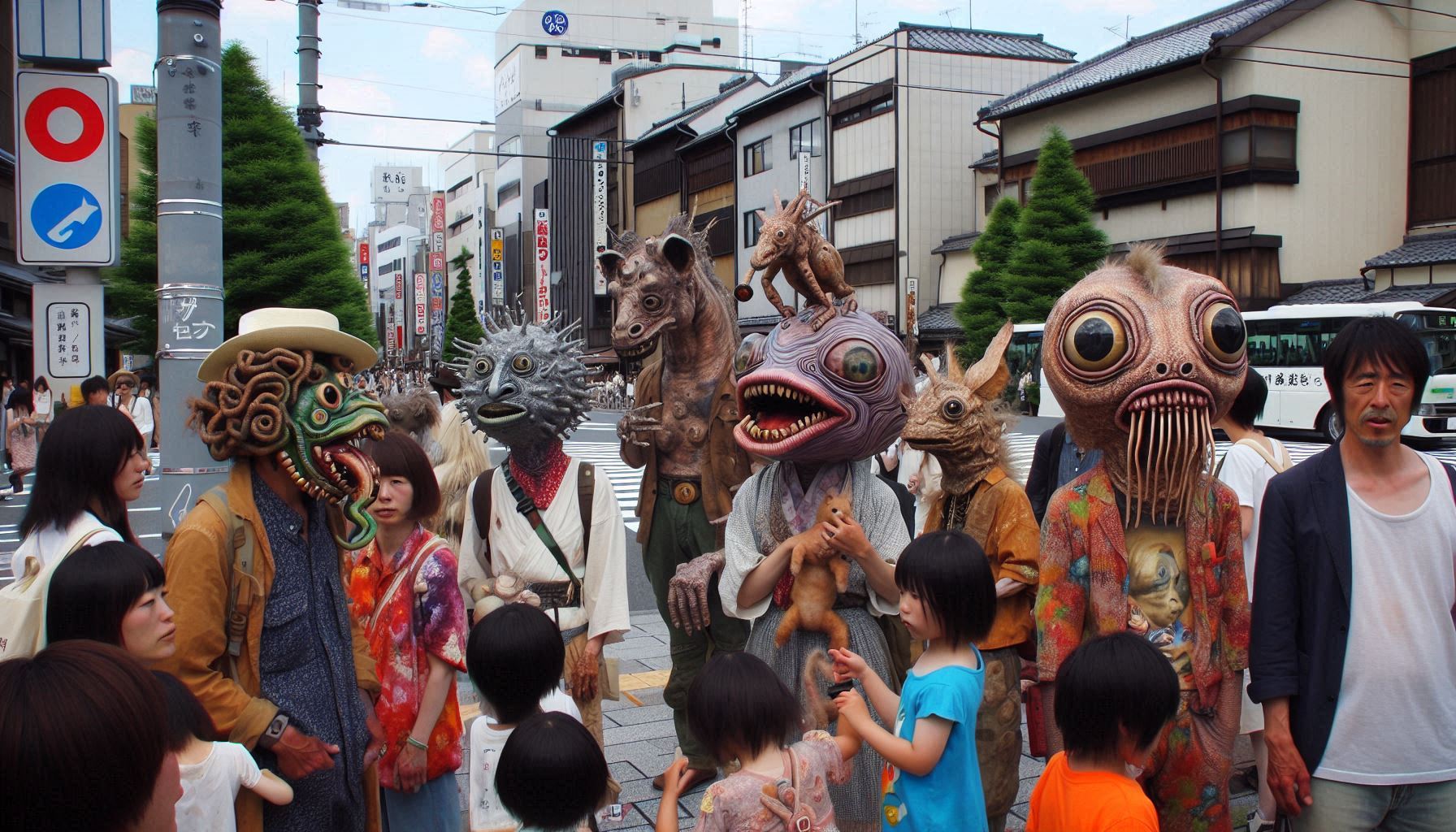
Entity Cluster KYT-CQO/12
Designated as **Entity Cluster KYT-CQO/12**, these costumed figures appear annually during the unregistered procession known locally as _The Soft Parade_. While officially dismissed as performance art, Registry observers note that no two sightings have featured the same individuals — and no participants have ever been successfully identified post-event. The creatures exhibit non-verbal communication, high tolerance for heat, and an uncanny ability to mimic local dialects through gesture alone. Children are drawn to them instinctively. Adults report mild disorientation and dream residue.
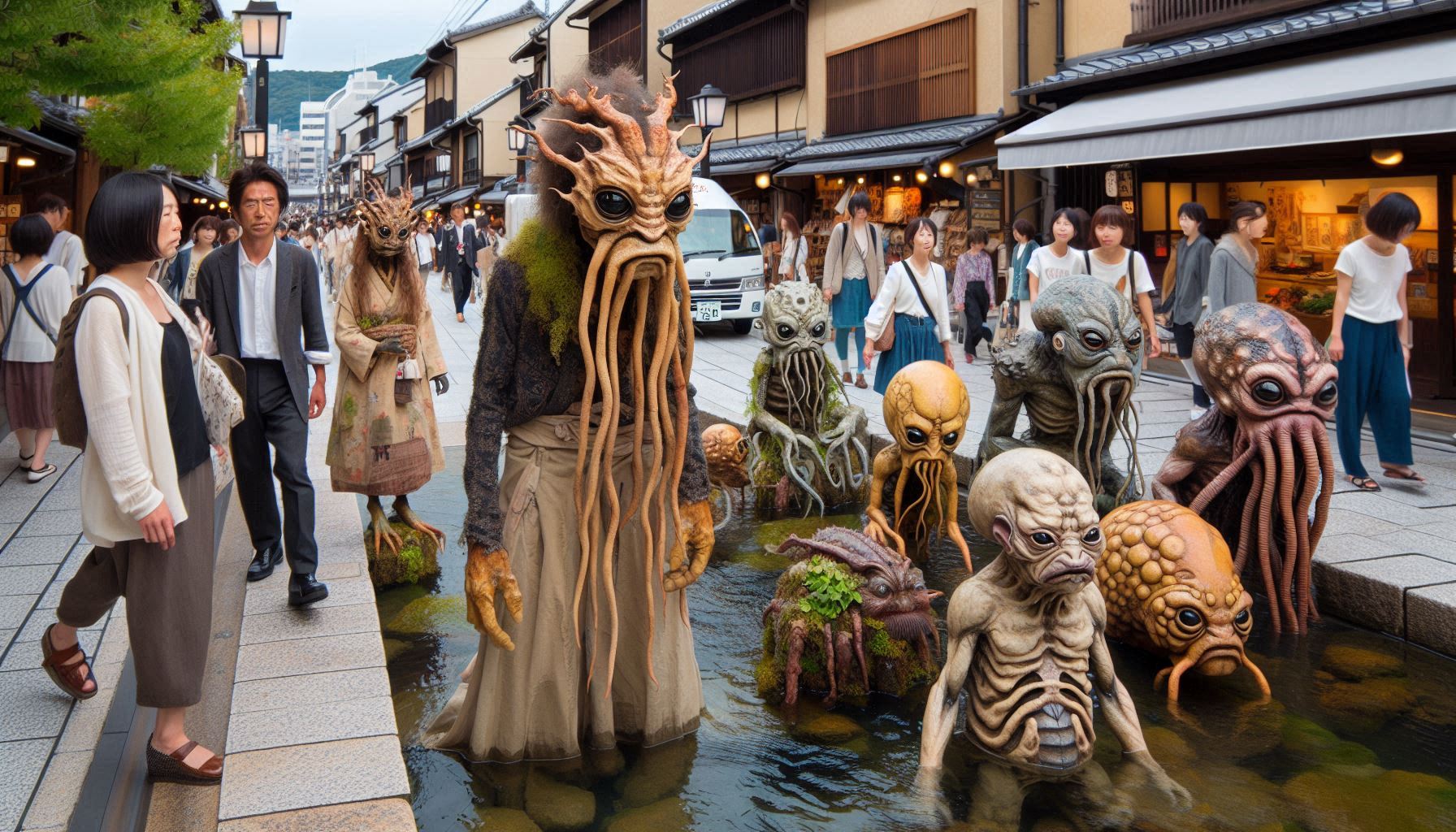
The Lantern Feeders
Catalogued as **Phenotype KYT-CQO/19**, these cephalomorphic entities are known collectively as _The Lantern Feeders_. First documented during a midsummer festival in the Gion district, they appear only in areas where traditional lanterns remain gas-lit. Despite their size and complexity, no physical traces are left behind — only the faint scent of brine and a temporary dimming of nearby light sources. Locals treat them with casual reverence, offering small coins or folded paper charms. Attempts to photograph them digitally often result in corrupted files or unexpected overlays of ancestral portraits.
